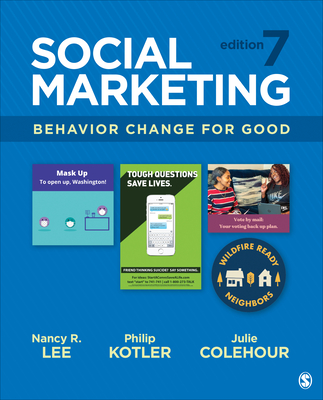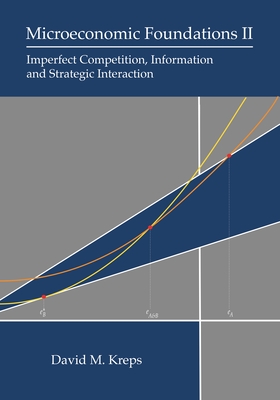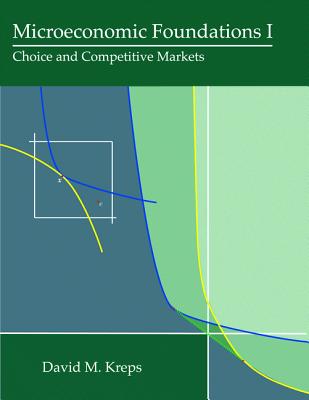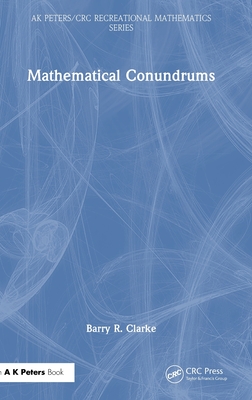图书简介
The new edition of this classic text provides a practical, easy-to-use guide to clinical consultation in genetics, covering the process of diagnosis, investigation, management, and counselling for patients. All genetic conditions are covered as well as referral categories for a clinical genetic opinion.
Introduction; Adoption; Approach to the consultation with a child with dysmorphism, congenital malformation or developmental delay; Autosomal dominant (AD) inheritance; Autosomal recessive (AR) inheritance; Communication skills; Complex inheritance; Confidentiality; Confirmation of diagnosis; Consent for genetic testing; Genetic basis of cancer; Genetic code and mutations; Genomes and genomic variation; Genomic imprinting; Genomic sequencing and interpretation of data from WES or WGS analyses; Mitochondrial inheritance; Reproductive options; Testing for genetic status; Timing and origin of new dominant mutations; Useful resources; X-linked dominant (XLD), semi-dominant, pseudoautosomal and male sparing inheritance; X-linked recessive inheritance; Clinical Approach; Ambiguous genitalia (including sex reversal); Anal anomalies (atresia, stenosis); Anterior segment eye malformations; Arthrogryposis; Ataxic adult; Ataxic child; Brachydactyly; Broad thumbs; Cardiomyopathy in children under 10 years; Cataract; Cerebellar anomalies; Cerebral palsy; Chondrodysplasia punctata; Cleft lip and palate; Coarse facial features; Coloboma; Congenital heart disease; Congenital hypothyroidism; Corneal clouding; Deafness in early childhood; Developmental delay in the child with consanguineous parents; Developmental regression; Duane retraction syndrome; Dysmorphic child; Dystonia; Ear anomalies; Facial asymmetry; Failure to thrive; Floppy infant; Fractures; Generalized disorders of skin pigmentation (including albinism); Hemihypertrophy and limb asymmetry; Holoprosencephaly; Hydrocephalus; Hypermobile joints; Hypoglycaemia in the neonate and infant; Hypospadias; Intellectual disability; Intellectual disability with apparent X-linked inheritance; Increased bone density; Intracranial calcification; Large fontanelle; Laterality disorders including heterotaxy and isomerism; Leukodystrophy/leukoencephalopathy; Limb reduction defects; Lissencephaly, polymicrogyria and neuronal migration disorders; Lumps and bumps; Macrocephaly; Microcephaly; Micrognathia and Robin sequence; Microphthalmia and anophthalmia; Minor congenital anomalies; Nasal anomalies; Neonatal encephalopathy and intractable seizures; Nystagmus; Obesity with and without developmental delay; Ocular hypertelorism; Oedema generalized or puffy extremeties; Oesophageal and intestinal atresia (including tracheo-oesophageal fistula); Optic nerve hypoplasia; Overgrowth; Patchy hypo- or de-pigmented skin lesions; Patchy pigmented skin lesions (including cafe-au-lait spots); Plagiocephaly and abnormalities of skull shape; Polydactyly; Prolonged neonatal jaundice and jaundice in infants below 6 months; Ptosis, blepharophimosis and other eyelid anomalies; Radial ray defects and thumb hypoplasia; Retinal dysplasia; Retinal receptor dystrophies; Scalp defects; Seizures with developmental delay/intellectual disability; Short stature; Skeletal dysplasias; Structural intracranial anomalies (agenesis of the corpus callosum, septo-optic dysplasia and arachnoid cysts); Sudden cardiac death; Suspected non-accidental injury; Syndactyly (other than 2-3 toe syndactyly); Unusual hair, teeth, nails and skin; Common consultations; Achondroplasia; Alpha1-antitrypsin deficiency; Alport syndrome; Androgen insensitivity syndrome (AIS); Angelman syndrome; Autism and autism spectrum disorders; Autosomal dominant polycystic kidney disease (ADPKD); Beckwith-Wiedemann syndrome (BWS); Charcot-Marie-Tooth disorder (CMT); Ciliopathies; Congenital adrenal hyperplasia (CAH); Consanguinity; Craniosynostosis; Cystic fibrosis (CF); Dementia early onset and familial forms; Diabetes mellitus; Dilated cardiomyopathy (DCM); DNA repair defects; Duchenne and Becker muscular dystrophy (DMD and BMD); Ehlers-Danlos syndrome; Epilepsy in infants and children; Epilepsy in adults; Fascioscapulo-humeral muscular dystrophy (FSHD); Fragile X syndrome (FRAX); Glaucoma; Haemochromatosis; Haemoglobinopathies; Haemophilia and other inherited coagulation disorders; Hereditary haemorrhagic telangiectasia (HHT); Herediatry spastic paraplegia (HSP); Hirschprung disease; Huntington disease (HD); Hyperlipidaemias; Hypertrophic cardiomyopathy (HCM); Immunodeficiency and recurrent infection; Incest; Leigh encephalopathy; Limb-girdle muscular dystrophies; Long QT and Brugada syndromes; Marfan syndrome; Mitochondrial DNA diseases; Myotonic dystrophy (DM1); Neural tube defects; Neurofibromatosis type 1 (NF1); Noonan syndrome and the RAS-MAPK pathway disorders; Parkinson disease; Retinitis pigmentosa (RP); Rett syndrome; Sensitivity to anaesthetic agents; Spinal muscular atrophy (SMA); Stickler syndrome; Thrombophilia; Tuberous sclerosis (TSC); X-linked adrenoleukodystrophy (X-ALD); Cancer; BRCA1 and BRCA2; Breast cancer; Cancer surveillance methods; Colorectal cancer (CRC); Confirmation of diagnosis of cancer; Cowden syndrome (CS); Familial Adenomatous Polyposis (FAP) and adenomatous polyposis (due to MUTYH, NTHL1, POLE & POLD1); Gastric cancer; Gorlin syndrome; Juvenile polyposis syndrome (JPS); Lynch syndrome; Lifestyle factors in cancer: smoking, alcohol, obesity, diet and exercise; Li-Fraumini syndrome (LFS); Multiple endocrine neoplasia (MEN); Neurofibromatosis type 2 (NF2); Ovarian cancer; Peutz-Jeghers syndrome (PJS); Phaeochromocytoma and Paraganglioma; Prostate cancer; Renal cancer; Retinoblastoma; von Hippel-Lindau (VHL) disease; Wilms tumour; Chromosomes; 22q11 deletion syndrome; 47,XXX; 47,XXY; 47,XYY; Autosomal reciprocal tranlsocations background; Autosomal reciprocal translocations familial; Autosomal reciprocal translocations postnatal; Autosomal reciprocal translocations prenatal; Cell division mitosis, meiosis and non-disjunction; Chromosomal mosaicism postnatal; Chromosomal mosaicism prenatal; Deletions and duplications (including microdeletions and microduplications); Down syndrome (trisomy 21); Edwards syndrome (trisomy 18); Inversions; Mosaic trisomy 8; Mosaic trisomy 16; Patau syndrome (trisomy 13); Prenatal diagnosis of sex chromosome aneuploidy; Ring chromosomes; Robertsonian translocations; Sex chromosome mosaicism; Supernumerary marker chromosomes (SMCs) postnatal; Supernumerary marker chromosomes (SMCs) prenatal; Triploidy (69,XXX, 69XXY or 69,XYY); Turner syndrome, 45,X and variants; X-autosome translocations; Pregnancy and fertility; Anterior abdominal wall defects; Assisted reproductive technology: in vitro fertilization (IVF), intracytoplasmic sperm injection (ICSI) and pre-implantation genetic diagnosis (PGD); Bowed limbs; Congenital cystic lung lesions, Currarino syndrome, and sacrococcygeal teratoma; Congenital diaphragmatic hernia; Cytomegalovirus (CMV); Drugs in pregnancy; Female infertility and amenorrhoea: genetic aspects; Fetal alcohol syndrome (FAS); Fetal anticonvulsant syndrome (FACS); Fetal akinesia; Fetomaternal alloimmunisation (rhesus D and thrombocytopaenia); Hyperechogenic bowel; Hyoplastic left heart; Imaging in prenatal diagnosis; Invasive techniques and genetic tests in prenatal diagnosis; Low maternal serum oestriol; Male infertility: genetic aspects; Maternal age; Maternal diabetes mellitus and diabetic embryopathy; Maternal phenylketonuria (PKU); Miscarriage and recurrent miscarriage; Neonatal (newborn) screening (NS); Non-invasive prenatal diagnosis/testing (NIPD/T); Oedema increased nuchal translucency, cystic hygroma and hydrops; Oligohydramnios (Including Potter/ Oligohydramnios sequence); Paternal age; Polyhydramnios; Posterior fossa malformations; Premature ovarian failure (POF); Radiation exposure, chemotherapy, and landfill site; Rubella; Short limbs; Talipes (Club foot); Toxoplasmosis; Twins and twinning; Urinary tract and renal anomalies (Congenital anomalies of the kidney and urinary tract - CAKUT); Varicella; Ventriculomegaly; Appendix; Antenatal and neonatal screening timelines; Bayes theorem; Carrier frequency and carrier testing for autosomal recessive disorders; Centile charts for boys height and weight; Centile charts for girls height and weight; Centile charts for occipital-frontal circumference (OFC); CK (Creatine kinase) levels in carriers of Duchenne muscular dystrophy (DMD); Conversion charts from English to metric units for height and weight; Denver Developmental Screening Test; Distribution of muscle weakness in different types of muscular dystrophy; Dysmorphology examination checklist; Embryonic fetal development (overview); Family tree sheet and symbols; Haploid autosomal lengths of human chromosomes; Investigation of lethal metabolic disorder or skeletal dysplasia; ISCN Nomenclature; Karyotypes; Normal range of aortic root dimensions; Paternity testing; Patterns of cancer; Radiological investigations including magnetic resonance imaging (MRI); Skeletal dysplasia charts; Staging of puberty
Trade Policy 买家须知
- 关于产品:
- ● 正版保障:本网站隶属于中国国际图书贸易集团公司,确保所有图书都是100%正版。
- ● 环保纸张:进口图书大多使用的都是环保轻型张,颜色偏黄,重量比较轻。
- ● 毛边版:即书翻页的地方,故意做成了参差不齐的样子,一般为精装版,更具收藏价值。
关于退换货:- 由于预订产品的特殊性,采购订单正式发订后,买方不得无故取消全部或部分产品的订购。
- 由于进口图书的特殊性,发生以下情况的,请直接拒收货物,由快递返回:
- ● 外包装破损/发错货/少发货/图书外观破损/图书配件不全(例如:光盘等)
并请在工作日通过电话400-008-1110联系我们。
- 签收后,如发生以下情况,请在签收后的5个工作日内联系客服办理退换货:
- ● 缺页/错页/错印/脱线
关于发货时间:- 一般情况下:
- ●【现货】 下单后48小时内由北京(库房)发出快递。
- ●【预订】【预售】下单后国外发货,到货时间预计5-8周左右,店铺默认中通快递,如需顺丰快递邮费到付。
- ● 需要开具发票的客户,发货时间可能在上述基础上再延后1-2个工作日(紧急发票需求,请联系010-68433105/3213);
- ● 如遇其他特殊原因,对发货时间有影响的,我们会第一时间在网站公告,敬请留意。
关于到货时间:- 由于进口图书入境入库后,都是委托第三方快递发货,所以我们只能保证在规定时间内发出,但无法为您保证确切的到货时间。
- ● 主要城市一般2-4天
- ● 偏远地区一般4-7天
关于接听咨询电话的时间:- 010-68433105/3213正常接听咨询电话的时间为:周一至周五上午8:30~下午5:00,周六、日及法定节假日休息,将无法接听来电,敬请谅解。
- 其它时间您也可以通过邮件联系我们:customer@readgo.cn,工作日会优先处理。
关于快递:- ● 已付款订单:主要由中通、宅急送负责派送,订单进度查询请拨打010-68433105/3213。
本书暂无推荐
本书暂无推荐















